Your Instagram feed may be more diverse than ever, thanks to the host of plus-size babes using their platforms to foster a celebratory and inclusive online community, but the fashion world still has a long way to go.
From brands claiming that a lack of size inclusivity in their collections is due to the cost of material (but what about all those “oversized” blazers and boyfriend jeans?) to minimal body diversity during fashion month (at spring ’20, out of 7,390 castings, just 86 plus-size models walked the catwalks, with London showing a dismal three), it’s fair to say that the industry as a whole has major steps to take before genuinely exciting representation can be achieved.
Enter: Joey Darlinn. Tired of bearing witness to the industry’s double standards and illusions of inclusivity, the plus-size model and body-positive influencer teamed up with photographer Michael Mayren, owner and director of game-changing agency Brother Models, to create the Curve Board. “I always felt a responsibility to represent an accurate reflection of the society we live in, in terms of race, gender, sexuality, age, size, ability,” says Mayren, who founded Brother in 2016. “It’s been a priority to be as inclusive as possible and to push for clients to do the same. We’ve always included curve and plus-size models on our regular boards but the idea to add a whole board came earlier this year as Joey and I share the same core beliefs and vision, which is hard to come by in the fashion industry.”
While there is more coverage of plus-size bodies in mainstream media today, the representation within that visibility is what led the duo to fight back. “Because we’re seeing bigger bodies in the media, becoming a part of some brand’s identity, we lose sight of the general lack of inclusivity and representation,” Darlinn tells me ahead of the launch. “The plus-size modeling industry has followed suit of the straight-size divisions in creating a blueprint of what a plus model is. We rarely see varying body shapes, body sizes, skin tones, feature sizes, and shapes. We still adhere to a sample size, we still are creating beauty standards even within the most inclusive part of the industry as a whole.”
Beyond the mainstream’s acceptable version of a bigger body — an exaggerated hourglass figure — the plus-size sector has to navigate the same issues as the rest of the world in deeming what is and isn’t beautiful. “The industry still westernizes beauty within the plus division, it still marginalizes certain people, and still creates a hierarchy that is fundamentally damaging to the mental wellbeing of those navigating the industry, as well as the younger generation,” Darlinn says. “I’ve been in a bigger body my whole life and the way it’s policed and solicited without warrant is a direct effect of the above.”
Plus-size models still have to contend with wider industry issues — sample sizes coming in a standard small, tokenism, a lack of plus-size stylists to work with — but Darlinn, Mayren, and the 22 Curve Board models signed so far are paving the way towards progress. “We have to do better, we have to break the cycle and make sure young people can see themselves and understand they’re important, too. There are so many factors that contribute to body shape and size, yet the same themes are always centered. We can no longer equate size to health, we have to combat fatphobia and it starts, in my opinion, with normalizing representation of ALL bodies,” Darlinn says. “We need a new normal.” Amen to that.
Ahead, we asked five of Brother’s new Curve models about progress, plus-size icons, and self-love.
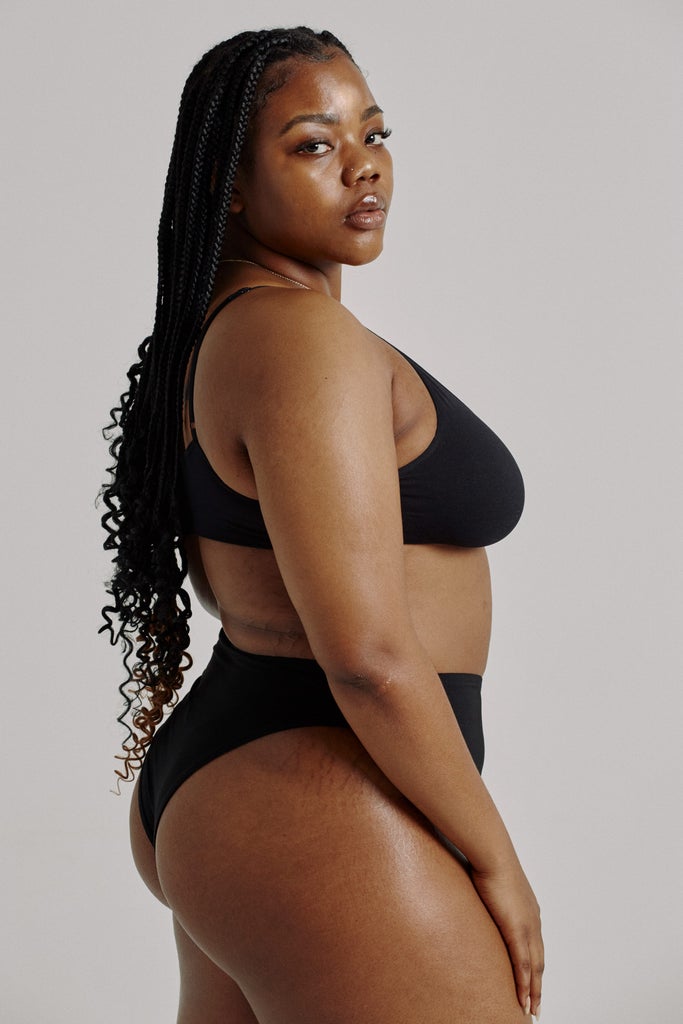
Mags, model and founder of Made By Mags Cosmetics, Manchester
What do you think is the biggest misconception about plus-size fashion?
That it’s taboo or wrong for plus-size people to wear certain items of clothing that straight-size people freely do, like thong bikinis, mesh clothing, going braless, or activewear, for example. We’re in 2020. Plus-size women can wear whatever they feel good in. I’ve seen comments flooded with hate whenever an activewear brand posts a curve model in their clothes. Women shouldn’t have to have their bodies and choices of clothing policed and ridiculed simply because they look different to the “norm.” Would you expect a straight-size woman to be on a beach in a full tracksuit? We need to address why larger bodies in normal/environmentally appropriate clothing are ridiculed and over-sexualized, to the point that even their social media photos are flagged for inappropriate content. We also need to address the industry’s contribution to the unrealistic beauty standards in place in society, and how this further fuels the ignorance towards plus-size fashion.
What do you think is the biggest misconception about plus-size modeling?
That it’s inclusive. While there has been a shift in recent years, and an increase in curvier women landing big campaigns and editorials, it feels like a lot of brands have found their “blueprint” — small waist and large hips. While this is a necessary body type to represent, it has been made a constant among many brands and is now the most conventionally accepted plus-size body type. Curvier women with loose skin, visible bellies, and small hips are left underrepresented. The industry can’t be truly inclusive until we see plus-size models with different/varied body types. People need to be able to go online and see people that look like themselves, their friends, and their peers so they’re not constantly comparing themselves to unrealistic images.
What change do you want to see in the industry concerning plus-size women?
I want the industry to normalize curvier women becoming the face of large brands and landing huge campaigns so it can start to be seen as “normal” and not wildly praised as a rare occurrence. I want plus-size women to be able to post freely on Instagram without comments about how brave they are. I’d like brands to include their plus-size divisions on the same social feed as their straight-size divisions so as to not reinforce the rhetoric that larger women are “different.” Brands need to start stocking larger sizes and stop using cost as an excuse as to why they can’t. We need plus-size stylists and directors on set. Inclusion in every aspect of the industry is the only way forward.
Who is your plus-size icon?
Philomena Kwao. She took off when she moved to New York in 2013 and since then I’ve watched her consistently advocating for women’s rights, inclusivity in the beauty industry, and, now that she’s a mother, maternal health. From the beginning of her career, she said she wanted to use her platform to empower women. It’s been amazing to watch her follow through on her word, and it’s one of the things that motivate me to carry on pushing boundaries.
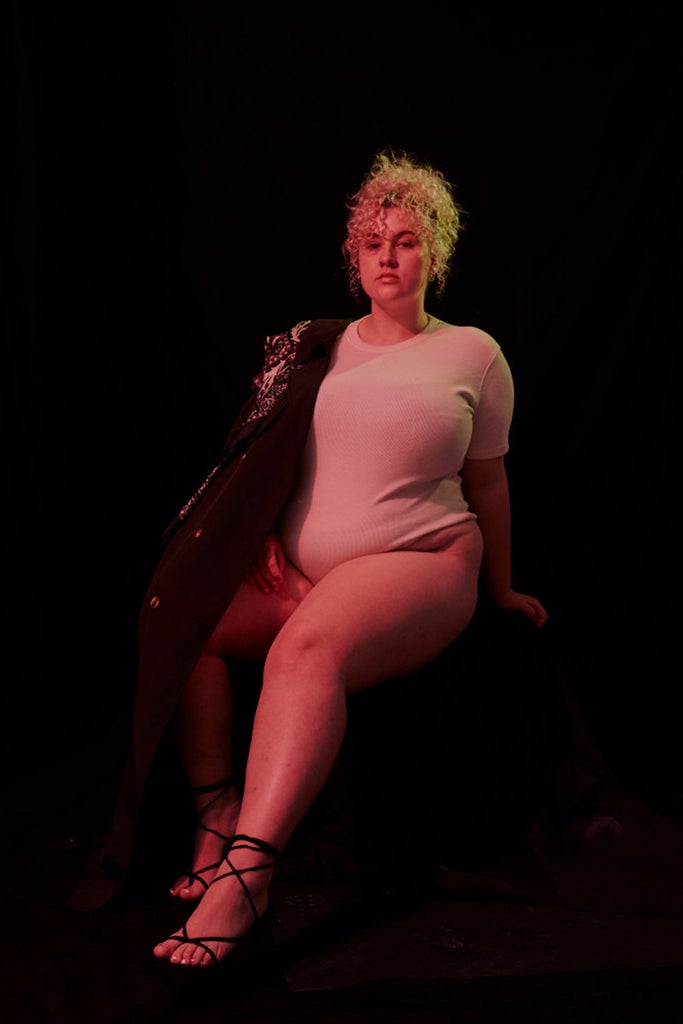
Darcy Jouza, student and model, Bedfordshire
What do you think is the biggest misconception about plus-size fashion?
That some women can’t wear a particular style of clothing because it isn’t “flattering” for a larger body shape. Plus-size women can wear whatever they want and still look just as good as someone with a slimmer body type.
What do you think is the biggest misconception about plus-size modeling?
When people think of plus-size models, they assume that they don’t live a healthy lifestyle. Everybody is different and naturally, there isn’t one size fits all for women. Because bigger models aren’t shown as much in the industry, this leads people to believe that being plus-size isn’t normal and therefore is unhealthy. We need to see more realistic body types being celebrated.
What change do you want to see in the industry concerning plus-size women?
I want bigger bodies to be normalized! I want women who don’t fit society’s “beauty norms” to see models on social media who look similar to them and feel good. I want young girls to grow up with a healthy outlook on weight and size, so they don’t feel as if they need to fit a certain format to be considered beautiful.
Who is your plus-size icon?
Aside from each girl on the Brother Curve Board, because all of those ladies are amazing, my plus-size icon has to be Emma Tamsin Hill, a social media influencer and a plus-size advocate. Following her online allowed me to discover a body-positive community on Instagram, with many plus-size ladies including herself promoting self-love. This really helped me learn to love my body and this inspires me to empower other women to love themselves too.
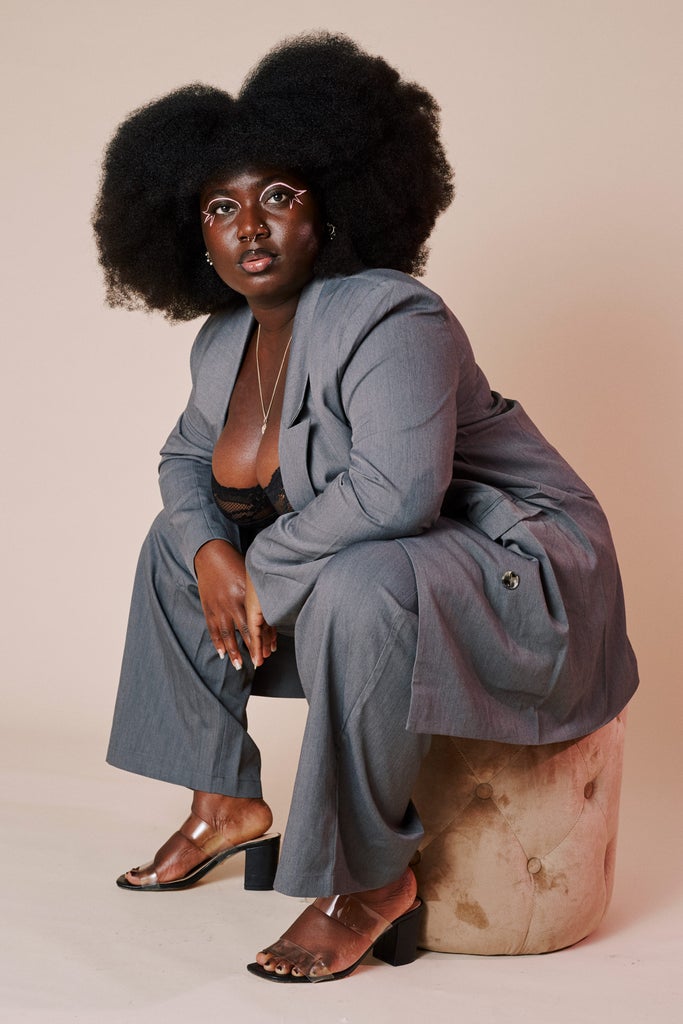
Myla, content creator, artist, and model, Manchester
What do you think is the biggest misconception about plus-size fashion?
Brands hold the ideology that plus-size bodies somehow don’t like to dress up, meaning luxury streetwear and high fashion brands don’t cater toward big bodies at all, and instead, give us very basic-ass material to work with, which is highly disappointing for a fashion lover like me who loves nothing more than dressing up in different styles.
What do you think is the biggest misconception about plus-size modeling?
Definitely the notion that in order to be a plus-size model you need to have thick thighs with a slight waist and wide hips. It literally feeds into westernized beauty, which is definitely something that I’m still unlearning myself.
What change do you want to see in the industry concerning plus-size women?
I want the industry to realize that if they want plus-size and fat bodies to shop sustainably, brands need to cater to our bodies FIRST — sustainable brands stopping at size 14 is appalling and most certainly frustrating. I want to see inclusivity, I want representation, I want to see plus-size and fat bodies of all different shapes AND sizes represented across the entire industry and not just the standardized curve body. I especially need to see bigger bodies on the catwalk to give us real representation in these spaces.
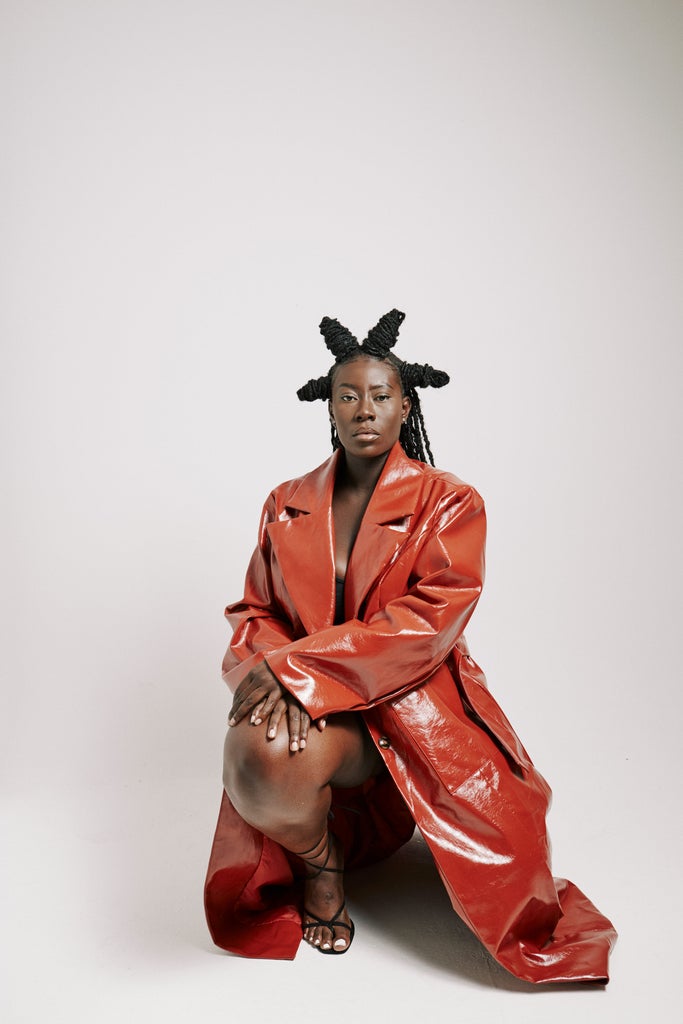
Wilhemina, model, CEO of DermaLuxe&Co and cofounder of B-DigitalUK, London
What do you think is the biggest misconception about plus-size fashion?
That we don’t enjoy fashion and the creativity that comes with it, we merely want to cover our bodies.
What do you think is the biggest misconception about plus-size modeling?
That we are “promoting obesity and being unhealthy.”
What change do you want to see in the industry concerning plus-size women?
I want to see a range of plus-size women, not just one type. I want plus-size women to be included in all areas of the industry, not just crammed into commercial campaigns. I want plus-size women to be allowed to do exactly what models do — model your clothing, not just for your “diverse and inclusive” brand campaign.
Who is your plus-size icon?
Brielle Anyea, I absolutely LOVE her!
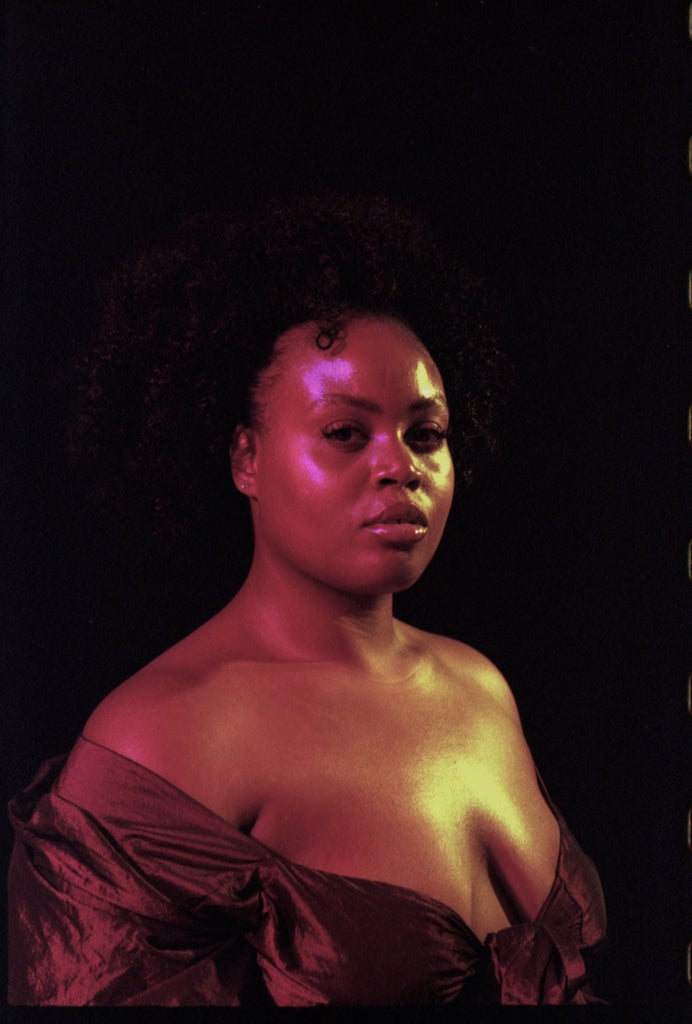
Chrissy PreMilli, model, Hackney
What do you think is the biggest misconception about plus-size fashion?
That our skin should be covered and that we are not fit to be bikini bodies.
What do you think is the biggest misconception about plus-size modeling?
I personally believe the biggest misconception about plus-size modeling is that models are unhealthy, don’t exercise, and that we’re encouraging people to be “fat.” Which I’d like to point out that I wholeheartedly and respectfully disagree with.
What change do you want to see in the industry concerning plus-size women?
I’m hoping to see representation of all women. If the ad states that the model has to be a size 18, please book an actual size 18 as opposed to a size 14 and then use padding.
Who is your plus-size icon?
Myself! Not being bigheaded but I’ve come so far from physically hating every aspect of my existence to falling in love with myself — it’s very inspiring. But I do love me some Precious Lee — she’s goals!
Like what you see? How about some more R29 goodness, right here?
Leah Vernon & Eloquii Teamed Up On A Drop

No comments:
Post a Comment